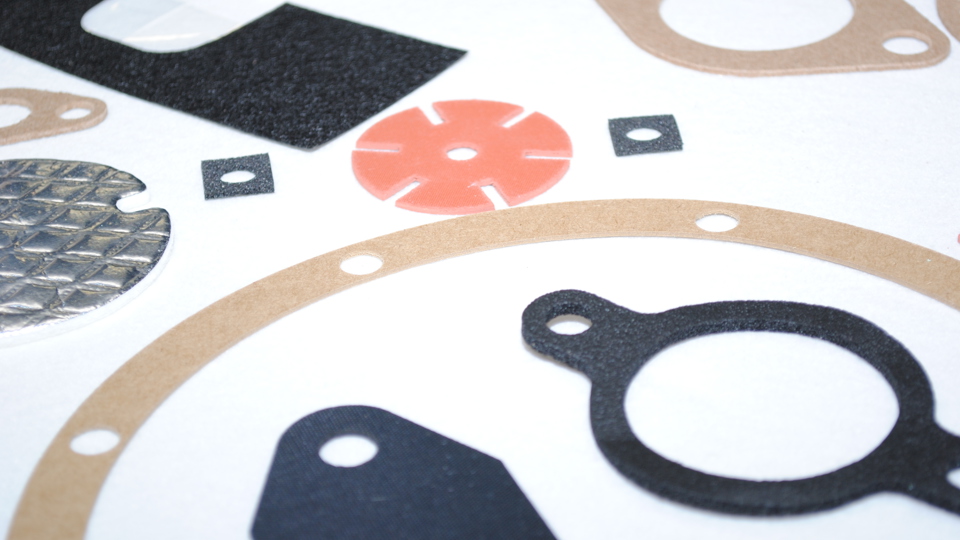How to Choose the Right PSA for Your Die-Cut Components

JBC Technologies has been working with pressure sensitive adhesives (PSAs) and foam tapes for over three decades, sourcing material from best-in-class suppliers including 3M™, Avery™, CCT, and more. Over the years, we’ve laminated adhesives to a wide variety of materials (foam, rubber, silicone, insulation, foil, and more) for a broad range of industries and applications – converting bulk materials into press-ready material for efficient die cutting.
Our experience has taught us that the more our clients know about the available materials – and what goes in to choosing them – the better we can help them make the right choice for their application, increasing end-product performance and customer satisfaction.
Here’s a high-level overview of the preliminary steps that go into selecting the right adhesive.
1 – Identify the end-use application of the gasket
How will the gasket be used? It is important to consider where and how the final product will be used and communicate this information to your converter. Adhesives can react differently depending on where and how they are applied.
2 – Determine how long you need the adhesive to last
Are you looking for a gasket or tape that is a temporary assembly aid, a permanent fastener, or something in between? The answer to these questions will help drive your next step.
PSAs can be grouped into three basic types: permanent, removable and repositionable. Die cut components with permanent adhesive cannot be removed without damaging either the PSA or the substrate. Those with removable adhesive can be easily peeled away from the substrate long after initially applied. And, as the name implies, repositionable adhesives can be lifted and repositioned.
3 – Consider the materials and substrates involved
What media will the gasket come into contact with? Substrates differ in terms of material, texture, the presence of contaminants, levels of surface energy, and more. Substrates with low surface energy, for example, can repel adhesives and make bonding difficult. Read more on surface energy and substrate types here.
4– Understand the environment in which the gasket will be used
What are the surrounding environmental impacts? In addition to the temperature of the substrate itself, there are environmental factors that should be considered, including exposure to excessive heat or cold, moisture, solvents, oils and greases it may come into contact with.
5 – Evaluate the types of stress the adhesive will be subjected to
How much stress will the adhesive see over its life? Knowing this will help you identify the necessary peel adhesion (the amount of force that’s required to break the bond between a PSA and the substrate to which it’s been applied), the tack (the stickiness of the adhesive under slight pressure), and the shear strength (the ability of the adhesive to hold when pulled in the same plane.) We’ll dive into this in more detail in the next blog in this series.
6 – Find the right partner
Armed with the above information, the next step is to determine which of the many available options will meet your cost and performance requirements. This is where working with the right partner comes into play. At JBC, our engineers and technicians have over a century of combined expertise in material selection and product design knowledge and are here to help you solve your product design challenges.
Assistance with material and adhesive selection is just one of the many value-added solutions that JBC offers to help customers improve quality, reduce costs, and increase efficiency.
Contact us today to learn how we can help you with your next project.
Related Reading
DO YOU REALLY NEED A SILICONE PRESSURE-SENSITIVE ADHESIVE?
PART 1: THE BASICS OF PRESSURE SENSITIVE ADHESIVE (PSA) FAILURE
PART 2: THE BASICS OF PRESSURE SENSITIVE ADHESIVE (PSA) FAILURE
3M™ is a trademarks of the 3M Company.
Avery™ is a trademark of Avery Dennison Corp.